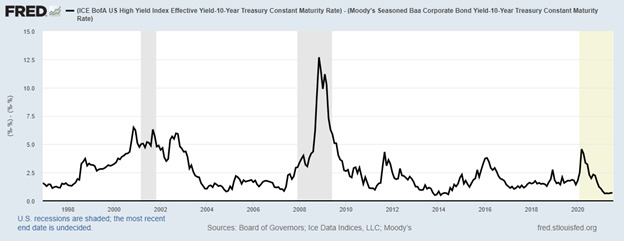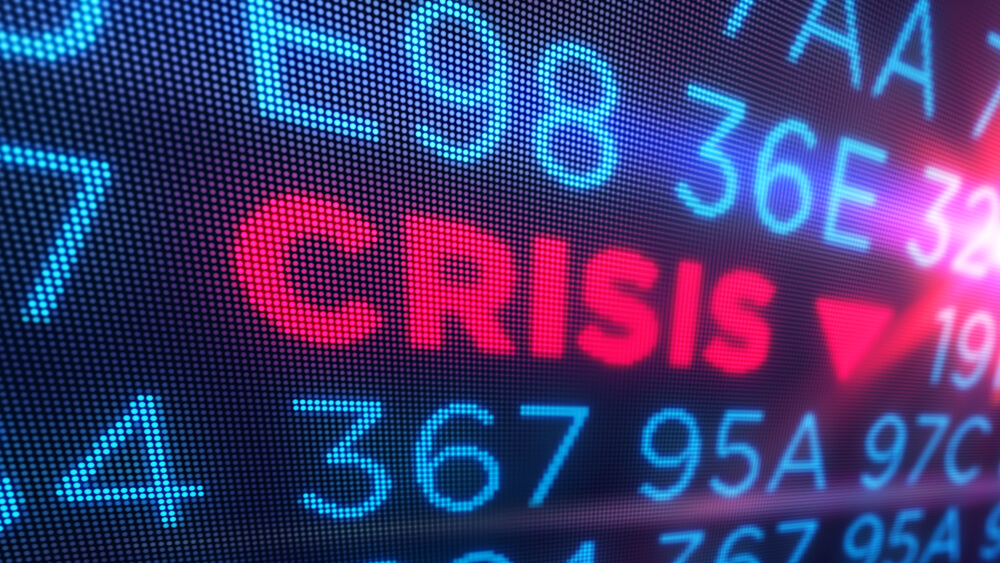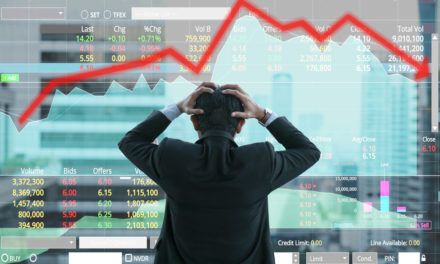Warren Buffett once said that it’s good for investors to be “fearful when others are greedy, and greedy when others are fearful.”
That’s great advice, but many investors struggle to quantify fear and greed. Some use data from surveys. Others evaluate the tone of the coverage in news stories. These can be useful, but that type of data is difficult to interpret because it is subjective.
The bond market offers a way to objectively evaluate fear and greed. This can be done by calculating risk premiums built into bond prices.
The risk premium is defined as the spread between different types of bonds. The spread is the difference in yields.
One measure of the risk premium is the difference between junk bond yields and the yield available on Treasury securities. Treasurys are risk-free. That means if a ten-year note yields 2% and a junk bond due in ten years yields 6%, the risk premium is 4%.
Investment grade securities, those considered safer than junk bonds, are generally those with a rating of Baa or higher. Bond rating agencies like Moody’s believe companies issuing these bonds have enough cash to pay their debts in good times but could miss payments in an economic downturn.
Moody’s assigns a Baa rating to these bonds. When the economy is growing, bond market investors buy corporates for higher yields. This means they drive rates on Baa bonds down, and the spread, or difference, between Baa rates and Treasury notes falls. When risks rise, bond traders move to Treasurys and the Baa spread rises.
The same pattern is also seen in junk bonds. Risk premiums should rise as risks rise.
The chart below shows the difference in the spreads of investment-grade spreads and junk bond spreads. This shows the risk premium in the bond market as a whole. It’s near a record low.
Bond Market’s Risk Premium Is Near a Record Low

Source: Federal Reserve.
Bond Market Suggests Investors Watch Out
Risk premiums are near record lows, with investors demanding little extra return to hold the riskiest assets in the market.
When risks are ignored, the market lays the groundwork for the next crisis. This happened in the late 1990s when risks were ignored, unprofitable companies secured ample funding, and the economy went into recession as those companies went out of business.
In the early 2000s, real estate lending standards were lowered. The crisis that followed almost broke the global financial system.
The next crisis will be different than those two. But interest rate spreads tell us that prudent investors should watch for which sector will lead to a crisis, and a global recession.
I don’t like working more than I have to.
That’s why I found a way to beat the market by making one simple trade per week.
Last year, this trade helped me beat the market eight times over.
It’s a great way to accelerate your gains. Click here, and I’ll show you how it works.
Michael Carr is a Chartered Market Technician for Banyan Hill Publishing and the Editor of One Trade, Peak Velocity Trader and Precision Profits. He teaches technical analysis and quantitative technical analysis at the New York Institute of Finance. Mr. Carr is also the former editor of the CMT Association newsletter, Technically Speaking.
Follow him on Twitter @MichaelCarrGuru.





